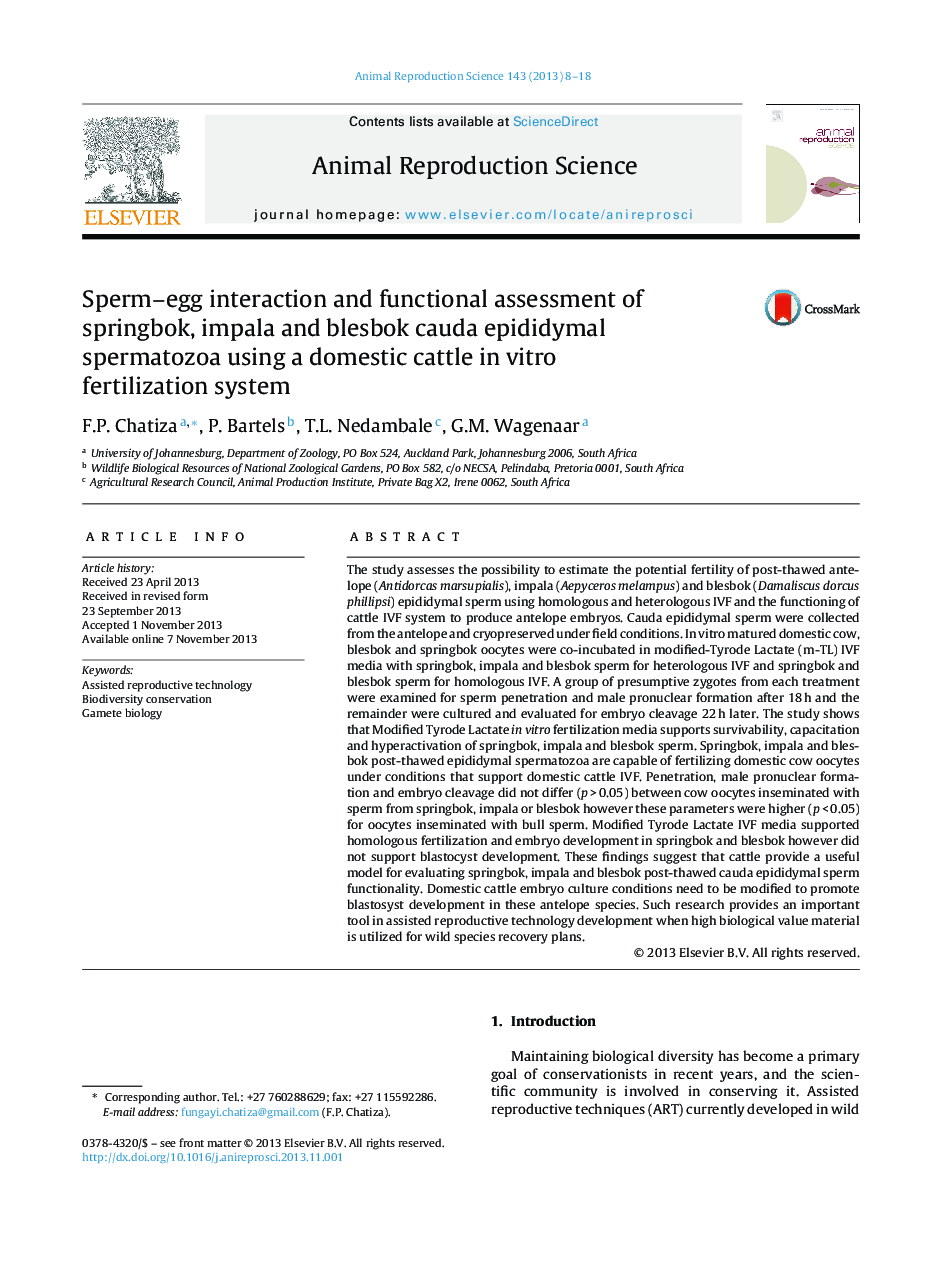| Article ID | Journal | Published Year | Pages | File Type |
|---|---|---|---|---|
| 2072895 | Animal Reproduction Science | 2013 | 11 Pages |
The study assesses the possibility to estimate the potential fertility of post-thawed antelope (Antidorcas marsupialis), impala (Aepyceros melampus) and blesbok (Damaliscus dorcus phillipsi) epididymal sperm using homologous and heterologous IVF and the functioning of cattle IVF system to produce antelope embryos. Cauda epididymal sperm were collected from the antelope and cryopreserved under field conditions. In vitro matured domestic cow, blesbok and springbok oocytes were co-incubated in modified-Tyrode Lactate (m-TL) IVF media with springbok, impala and blesbok sperm for heterologous IVF and springbok and blesbok sperm for homologous IVF. A group of presumptive zygotes from each treatment were examined for sperm penetration and male pronuclear formation after 18 h and the remainder were cultured and evaluated for embryo cleavage 22 h later. The study shows that Modified Tyrode Lactate in vitro fertilization media supports survivability, capacitation and hyperactivation of springbok, impala and blesbok sperm. Springbok, impala and blesbok post-thawed epididymal spermatozoa are capable of fertilizing domestic cow oocytes under conditions that support domestic cattle IVF. Penetration, male pronuclear formation and embryo cleavage did not differ (p > 0.05) between cow oocytes inseminated with sperm from springbok, impala or blesbok however these parameters were higher (p < 0.05) for oocytes inseminated with bull sperm. Modified Tyrode Lactate IVF media supported homologous fertilization and embryo development in springbok and blesbok however did not support blastocyst development. These findings suggest that cattle provide a useful model for evaluating springbok, impala and blesbok post-thawed cauda epididymal sperm functionality. Domestic cattle embryo culture conditions need to be modified to promote blastosyst development in these antelope species. Such research provides an important tool in assisted reproductive technology development when high biological value material is utilized for wild species recovery plans.
